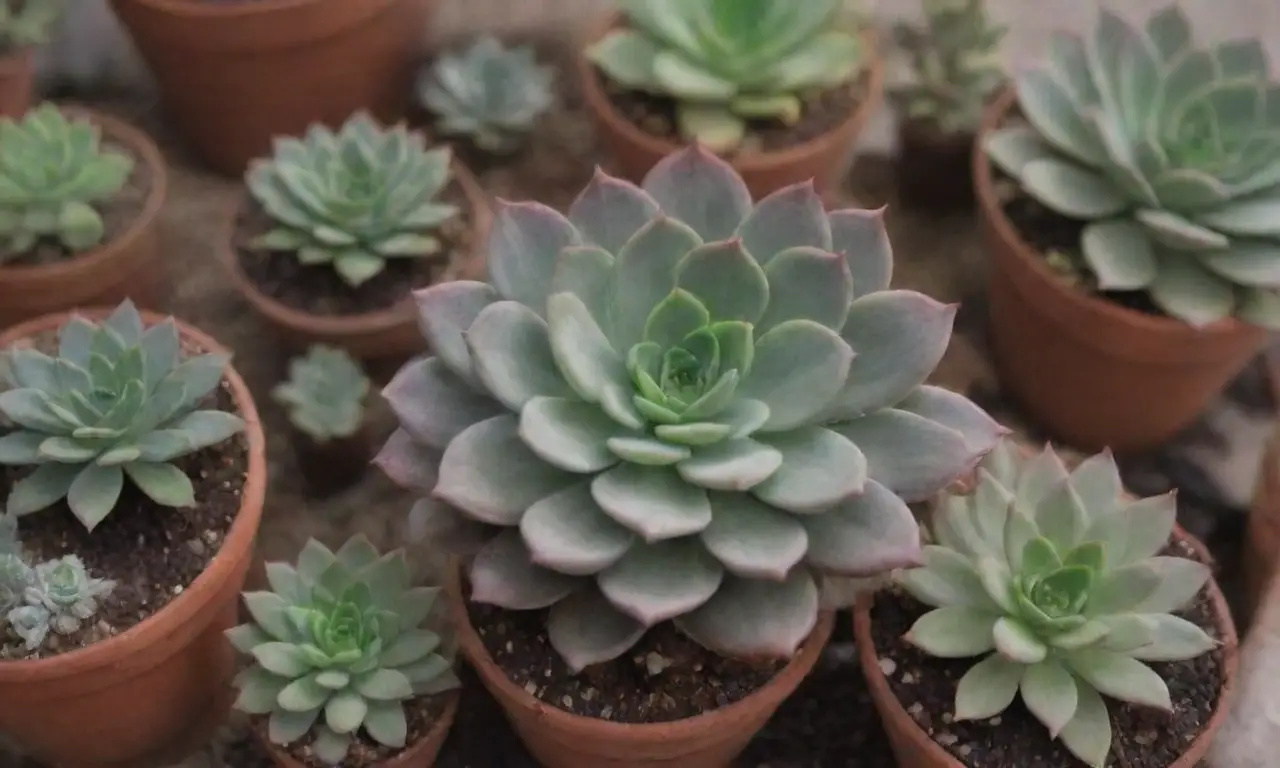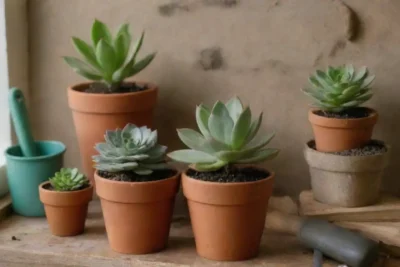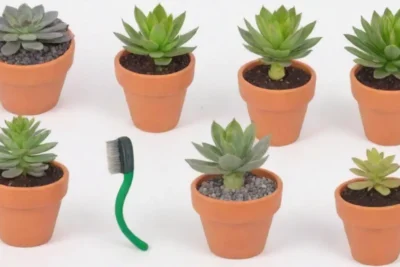
How Often Should You Repot Your Succulents? Key Insights

Introduction
Succulents, with their vibrant colors and unique textures, have become increasingly popular among plant enthusiasts and novice gardeners alike. These drought-resistant plants are not only visually appealing but also remarkably easy to care for, which makes them an ideal choice for busy individuals or those new to gardening. However, their care involves specific practices, one of the most important being repotting. Repotting encourages healthy growth and prevents issues related to overcrowding or nutrient depletion.
In this article, we will explore the topic of succulents and how often one should repot them. We will delve into the signs that indicate it's time to repot, the best practices for repotting succulents, and tips for creating the ideal potting environment that encourages lush growth. Understanding these aspects can significantly improve the longevity and health of your succulent plants.
Why Repot Your Succulents?
Repotting isn't just an option—it’s a necessity for maintaining the health of your succulent garden. Over time, these plants can become root-bound, where their roots have filled the current pot to the point where they no longer have room to grow. This can lead to several issues, including poor nutrient absorption, stunted growth, and increased susceptibility to pests and diseases.
Furthermore, the soil in which your succulents are planted can deteriorate over time. They require a well-draining potting mix tailored to their specific needs, and continual drainage is crucial. If the soil becomes compacted or loses its ability to drain, it can create a habitat for root rot, a common issue that can be fatal for succulents. Knowing when to repot your succulents can make a significant difference in their overall health and vigor.
Repotting also provides an excellent opportunity to change the pot itself. Many people may choose decorative pots that don’t have drainage holes, which is typically not recommended for succulents. By moving your plant to a more suitable pot, you improve its chances of thriving. Additionally, this practice allows you to refresh the nutrients in the soil, providing your succulents with a boost that encourages growth and flowering.
When to Repot Succulents
To successfully manage the health of your succulents, recognizing the signals that indicate it's time for repotting is crucial. Generally, it is advisable to evaluate your succulents every 6 to 12 months. However, several indicators can prompt you to assess the need for repotting sooner.
Signs That Indicate It’s Time to Repot
One of the first signs that your succulent may need to be repotted is if you see roots emerging from the drainage holes in the pot. This indicates that the plant has outgrown its current home and is desperate for more space. Alternatively, if you notice that the growth of the succulent has slowed down or has completely halted, it might be suffering from being root-bound.
 Container Gardening: Repotting Succulents in a Small Space
Container Gardening: Repotting Succulents in a Small SpaceAnother significant sign is the appearance of the soil. If the surface of the soil has become crusty or looks depleted of nutrients, it’s time to refresh it. Similarly, signs of disease or rot can also suggest repotting is necessary; examine for any discoloration on the roots during repotting. If you see mushy or brown roots, removing them and repotting the plant into fresh, well-draining soil can save it from decline.
Lastly, seasonal changes are a good gauge for when to repot. Early spring before the active growing season is generally considered the best time to repot. During this time, the plant will be more inclined to establish itself and grow after being disturbed, making it an ideal opportunity to give your succulent a fresh start.
Frequency of Repotting
The general guideline for when to repot succulents is roughly every 1 to 2 years. However, several factors can change this timeline, including the type of succulent, the size of the pot being used, and the growth conditions. For instance, faster-growing varieties like Jade plants may require more frequent repotting than slower-growing types such as aloes or haworthias.
Additionally, if you initially planted your succulent in a very small pot, it may require repotting sooner than succulents in adequately sized pots. It's worth noting that every time you repot, you're also refreshing the soil, so keeping track of the health of the soil can help determine whether it’s time for a change.
Another consideration is the climate and weather conditions. In hotter climates or during the peak summer months, succulents may grow more quickly and require earlier repotting. Conversely, in cooler climates or during the winter, growth tends to slow down, allowing for longer intervals between pot changes.
Best Practices for Repotting Succulents

When you decide it’s time to repot your succulents, preparing adequately for the task will help ensure success. Here are some best practices to follow when repotting to give your succulents the best chance to thrive in their new environment.
 Repotting Succulents: Timing and Frequency for Healthy Growth
Repotting Succulents: Timing and Frequency for Healthy GrowthSelecting the Right Container
Choosing the right container is essential for your succulent's health. Opt for a pot that is only one size larger than the current one—this gives the roots the space they need without overwhelming the plant. Ensure that the pot has a drainage hole as adequate drainage is critical to succulent health. There are a variety of materials available like ceramic, terracotta, and plastic; each has its pros and cons. Terracotta pots are often preferred because they wick moisture away, reducing the risk of overwatering.
Choosing the Right Soil Mix
When repotting your succulents, the type of soil you use is equally important. Select a well-draining soil mix designed for cacti and succulents. These soil mixes typically combine ingredients like perlite, sand, and peat moss, which help maintain aeration while allowing excess moisture to drain away. If you prefer a DIY approach, mixing standard potting soil with perlite or coarse sand can create a suitable medium that mimics ideal desert-like conditions.
The Repotting Process
Before starting the repotting, make sure to prepare your space. Gather all the necessary tools such as gloves, soil, the new pot, and scissors for pruning. Carefully remove the succulent from its current pot, loosening any tightly bound roots if necessary. While transplanting, take this opportunity to remove any dead roots and clean up any excess soil. After placing your succulent in the new pot, fill in the gaps around the roots with fresh soil, making sure not to bury the plant too deeply, as this can lead to rotting. Water lightly post-repotting, allowing the plant to establish without drowning it.
Conclusion
Repotting is a fundamental aspect of succulent care that can significantly enhance their growth potential and overall health. Understanding when to repot and how to execute the process correctly is crucial for any plant owner seeking to maintain their green companions for years to come. Regular assessments of your succulents for signs of overcrowding, nutrient deficiency, and root health will help determine the perfect time for repotting.
Utilizing proper containers and soil will ensure that your succulents have the environment they need to thrive. Remember, each succulent species may require different timelines and paths to repotting, so staying attuned to their specific needs is essential. Moreover, the practice of repotting provides a chance to refresh not just the roots, but also your aesthetic environment as you change out pots and reconfigure your leafy companions.
Ultimately, with the right attention and care, your succulents will flourish, bringing life and color to your indoor spaces or outdoor gardens. Happy gardening, and may your succulents thrive as you embrace the joy of nurturing these resilient plants!
 Repotting Techniques for Trailing Succulents: Tips and Hacks
Repotting Techniques for Trailing Succulents: Tips and HacksIf you want to read more articles similar to How Often Should You Repot Your Succulents? Key Insights, you can visit the Repotting Techniques category.





You Must Read